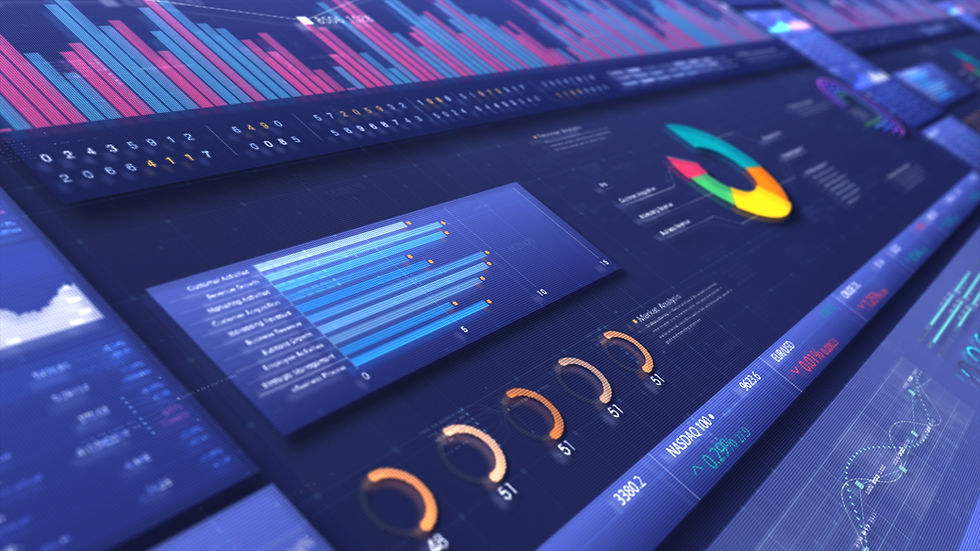Part 2 - How to Use Census Data
Three Part Series on the Scope, Tech, and Impact of the U.S. Census Bureau
By: Isaac D. Tucker-Rasbury, Data Fellow '22 | Bluebonnet Data

So, how do you access the census data? Download the whole of it, load up a jupyter notebook, import it all, and off we go to building an amazing dashboard? Fortunately, the U.S. Census Bureau and the supportive analytics community have created more infrastructure than that. In fact, the actual extent of the resources available for free and for public usage is quite commendable.
The bulk of tools create easy pathways to access, download, visualize, and build on the original census data. Subsequently, many of the tools specialize in processing “geodata”, ie. information about geographic locations that is stored in a format that can be used with a geographic information system. For example, some of these tools provide connections to census tracts, block groups, and block-level data.
Here are just a few of the resources available with brief explainers to get you oriented around the suite of currently available data tools.
United States Census Bureau - Explore Census Data. Learn about America's communities through [their] data profiles, tables, and maps. They cover 100,000+ geographies: states, counties, places, tribal areas, zip codes, and congressional districts. For each, [they] cover topics like education, employment, health, and housing just to name a few.
United States Census Bureau - QuickFacts. The QuickFacts page allows anyone to enter their state, county, city, or zip code of interest. It will provide them with the respective population, age and sex, race, housing, health, education, and business statistics for the respective areas.
United States Census Bureau - API. For web app developers trying to stand up tools for regular use. The bureau makes a number of APIs available so that one can connect directly to the various data the Bureau compiles and store on personal/company web servers and subsequent databases as needed.
United States Census Bureau - My Congressional District. My Congressional District gives you another way to quickly and easily access selected statistics collected by the U.S. Census Bureau. In addition to that, there is a visual element to the tool that can help you drill into the analytics you’re looking for.
United States Census Bureau - Visualizations and Infographics. The Census Bureau also creates data visualizations to illuminate trends in statistics they compile on their visualizations and infographics page. They’ve maintained this log of visualizations for years so there is a large library of resources available to model one’s own work on. Below is a perfect example of their work - a map visualizing a comparison between children and older adults over time.

Independently Maintained - TidyCensus (R package). Tidycensus is an R package that allows users to interface with a select number of the U.S. Census Bureau’s data APIs and return tidyverse-ready data frames, optionally with simple feature geometry included. Below are the tidycensus and R logos, respectively.


Independently Maintained - Tigris (R package). Tigris is an R package that allows users to directly download and use TIGER/Line shapefiles from the U.S. Census Bureau. Below are the tigris and R logos, respectively.

Independently Maintained - Census (Python library). A wrapper for the United States Census Bureau's API comparable to the R package Tidycensus. Below is the programming language python’s logo.

There are many notable mentions, but the top contenders are for tools that, while they do not immediately handle census data, pair well with census data as they assist with handling geodata and interactive maps: GeoPandas (Python library), Leaflet (JavaScript library), and ArcGIS (Cloud Software).



Of all these tools, only ArcGIS comes at a cost. The others are all free software that can be downloaded, installed, and leveraged within an hour of setup.
With this in mind, someone with access to the internet and a laptop can start working with census data as soon as today! Someone much like yourself, since you’re reading this article :)
In Part III, we’ll dive deeper into all of the impacts of the U.S. Census on the public!
Follow the conversation on LinkedIn here.

About The Author
Isaac D. Tucker-Rasbury (he/him) was a Bluebonnet Data Fellow for 2Million Texans’ Blue Action Network in 2022. He is currently working remotely from Los Angeles as a data analyst at Slalom and as a financial technology tutor for edX which manages coding bootcamps for continuing learners. When Isaac isn’t neck deep in spreadsheets, he is dancing on rollerskates or practicing photography. If you would like to get in touch, he can be contacted via LinkedIn.

Comentarios